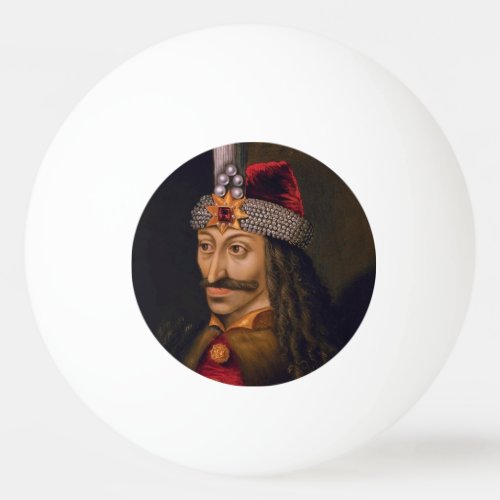Vlad Tepes: Impaler, Dracula Dragon Prince Voivode Ping Pong Ball



he year is 1431, the wind whispering through the Transylvanian peaks as Vlad III Dracula, known to history as Vlad Tepes (the Impaler), enters the world. Born into a tumultuous time, his life would become a legend woven from threads of brutality, cunning statesmanship, and unwavering defiance. --- His childhood was steeped in the realities of power. His father, Vlad II Dracul, was the Voivode (prince) of Wallachia, a small principality nestled between the mighty Ottoman Empire and the Hungarian Kingdom. Vlad II earned his name, Dracul (Dragon), by being a member of the Order of the Dragon, a chivalric society. This would become a cruel irony for his son. --- Vlad's youth was far from idyllic. At the tender age of 11, he and his younger brother Radu were sent as hostages to the Ottomans, a political chess move by his father to secure Ottoman favor. Here, Vlad witnessed firsthand the ruthlessness of a rising empire, a lesson that would forever mark his soul. --- Tragedy struck in 1444 when Vlad's father and brother were assassinated by political rivals. Vlad's life became a desperate struggle to reclaim his rightful place as Voivode of Wallachia. He spent the next decade embroiled in a bloody power struggle, battling Hungarian-backed rivals and enduring imprisonment. --- When Vlad finally ascended the Wallachian throne in 1456, a storm was gathering on the horizon – the Ottoman Empire, its ambitions fueled by the relentless Mehmed II, the conqueror of Constantinople. Wallachia, a thorn in the Ottoman path, was ripe for the taking. --- Vlad knew a direct confrontation would be suicidal. His strategy was audacious and horrifyingly effective. He unleashed a reign of terror on Wallachia, stamping out corruption and crime with an iron fist. His punishments were brutal; impalement became his gruesome trademark. Heads rolled, bodies were boiled, and fear became his most potent weapon. --- The most chilling example of his brutality came to be known as the Night of the Impaled. Under the cloak of darkness, Vlad's soldiers infiltrated Ottoman territory, seizing thousands of civilians. They were then impaled along the path of the approaching Ottoman army; a nightmarish forest of human suffering designed to break the Ottomans' will. --- The effect was undeniable. The Ottoman army, hardened veterans, were shaken to their core by the macabre spectacle. Morale plummeted, and the once confident march became a cautious crawl. While Vlad couldn't stop the Ottomans entirely, he had bought himself time and inflicted a psychological wound that would fester. --- Despite the brutality, Vlad wasn't just a tyrant. He was a cunning statesman, adept at playing his enemies against each other. He forged alliances with rival powers, manipulated Hungarian politics, and even managed to temporarily appease the Ottomans through a combination of tribute and threats. --- Vlad's legacy remains a bloody tapestry. To some, he's a national hero of Romania, a defender against overwhelming odds. His ruthlessness was a necessary evil, a desperate measure to safeguard his people's freedom. Others see him as a monster, a man consumed by a darkness he used as a weapon. --- The truth, as always, lies somewhere in between. Vlad Tepes was a product of his time, a man forged in the fires of violence and treachery. He was a brilliant leader, a ruthless warrior, and a man forever haunted by the darkness he himself unleashed. His story is a chilling reminder of the price of power and the thin line between hero and villain. - This work is in the public domain in its country of origin and other countries and areas where the copyright term is the author's life plus 100 years or fewer.


